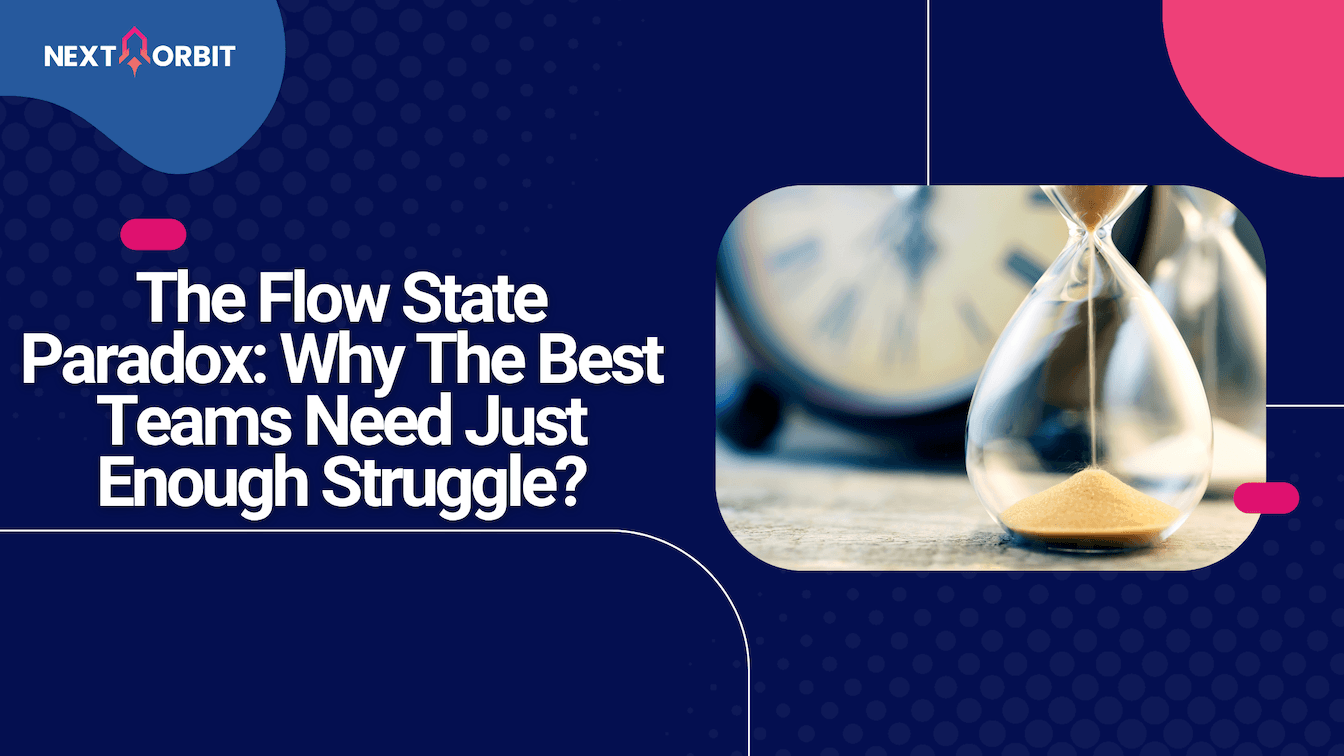Imagine you’ve finally made your dream team of brilliant developers. These developers are passionate, your systems are cutting-edge, and your processes are streamlined to perfection. Everything is working like a finely-tuned machine, right?
Instead, you’re staring at declining productivity metrics, team members who seem disengaged, and that nagging feeling that something fundamental is OFF.
Welcome to one of the counterintuitive discoveries in organizational psychology.
The Comfort Zone Conspiracy
Most leaders believe: Remove all obstacles, eliminate every struggle, create perfect working conditions, and watch productivity soar! Make everything easy, smooth out every bump, fix every hurdle, and the team will naturally perform at their peak.
But what if I told you this seemingly logical approach is not just wrong, it’s productivity poison? What if the pursuit of perfect ease is the very thing crushing the team’s potential?
The Science Behind Peak Performance
Mihaly Csikszentmihalyi, the Hungarian-American psychologist, uncovered many mind-blowing secrets about human performance. His research revealed: The secret to peak productivity isn’t eliminating challenge, it’s engineering the perfect amount of it.
Think about the last time you were completely drowned in your work. You lost track of time, and you weren’t fighting the task; you were dancing with it. The magical state? Scientists call it “FLOW,” and it only happens in a very specific sweet spot.
Here’s the kicker: flow only occurs when skill and challenge are in perfect tension. Too easy? Boredom. Too hard? Anxiety. But right in the middle, where the task is just hard enough to stretch you without breaking you, that’s the flow zone. It’s like tuning a guitar string: too loose, it flops. Too tight, it snaps. But tuned just right, it sings.
The Assembly Line Illusion vs. The Knowledge Work Reality
We owe much of our modern productivity thinking to Henry Ford. Break the work into parts, assign a specialist to each one, and optimize every step. It worked wonders on the assembly line. But try applying that same model to developers, designers, or data scientists, and things begin to unravel.
For manufacturing? It was revolutionary! But here’s where it gets fascinating: We’ve been trying to apply factory logic to knowledge work, and it’s been secretly sabotaging us. In today’s knowledge economy, the assembly line approach creates something unexpected – a productivity paradox. When everything is too easy, too specialized, or too predictable, we inadvertently deprive people of the very challenges that activate their highest-level thinking.
The Career Continuum
Think of a developer’s journey as a river flowing through different terrains. At the beginning, it’s a wild ride, and everything is unfamiliar. They’re navigating rapids, everything feels challenging, sometimes overwhelming, but they’re learning at light speed. As they gain experience, the waters calm. They can choose the path of a generalist, exploring broadly, or become a specialist, diving deep into one domain.
Both paths can lead to extraordinary productivity, but only if they maintain that crucial challenge skill balance. The specialist who stops being challenged in their domain? They flatline. The generalist who never goes deep enough to face real complexity? They plateau.
The key? Keep the waters just rough enough to be exciting, but not overwhelming. That’s when breakthrough performance happens.
The Consultant Effect
Here’s a story we see over and over again. Organizations bring in external experts, specialized consultants, and technical architects to solve complex problems. Thinking they need them for their specialized skills.
They assume it’s about outsourcing a skill set. But the most effective consultants do something far more transformative: they engineer learning experiences. When the right external experts come in, they don’t just solve the immediate problem. They do something far more valuable: They engineer the perfect learning challenge for the internal team.
The external expert becomes a “difficulty calibrator.” They raise the bar just enough to push the team into their flow zone.
The result? The team doesn’t just get their immediate problem solved – they level up their capabilities while experiencing the deep satisfaction of conquering something that initially seemed just beyond their reach.
The Psychology of Productivity Enhancement
This isn’t just workflow design. It’s human psychology. When you challenge people with support, you unlock motivation. Dopamine flows, confidence grows, and teams crave more complexity.
It’s about designing the right friction.
AI and the Future of Flow
Here’s where it gets thrilling. We’re entering an era where artificial intelligence can help us engineer these perfect challenge-skill balances at scale.
Imagine AI systems that can monitor engagement, recommend tasks, and adjust workloads to keep people in the flow zone. We’re not just accelerating work, we’re engineering growth. Imagine systems that sense when someone is bored or overwhelmed and dynamically adjust the difficulty level.
The Flow State Organization
The best organizations aren’t frictionless. They’re friction-optimized.
The most productive teams? They’re the ones doing work they weren’t sure they could do, and crushing it.

